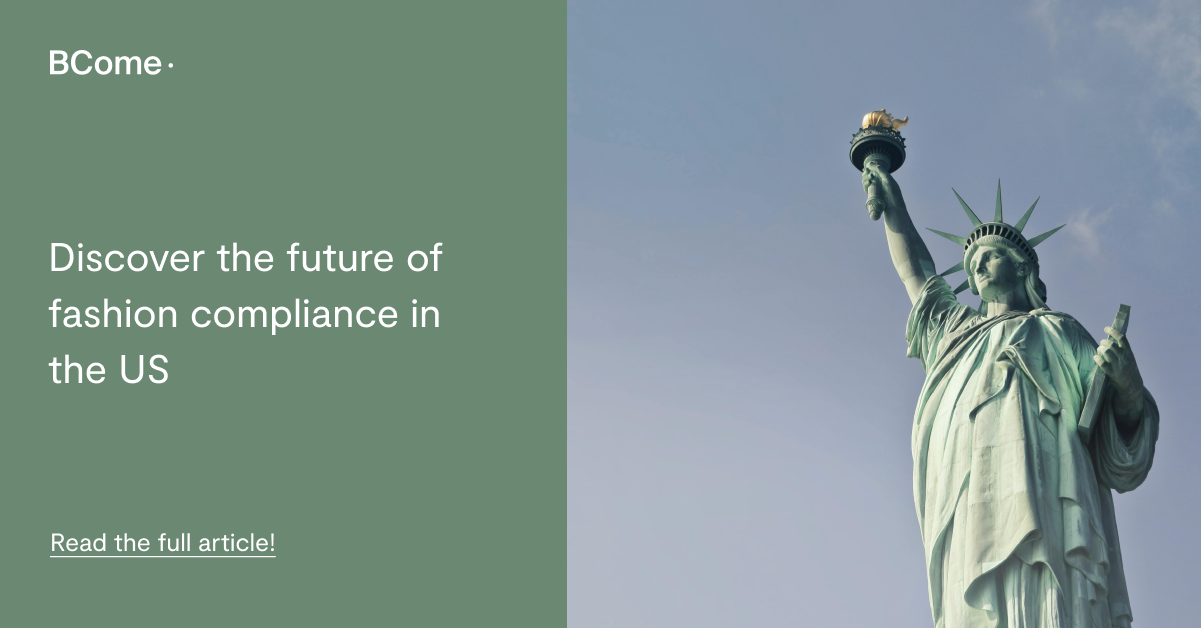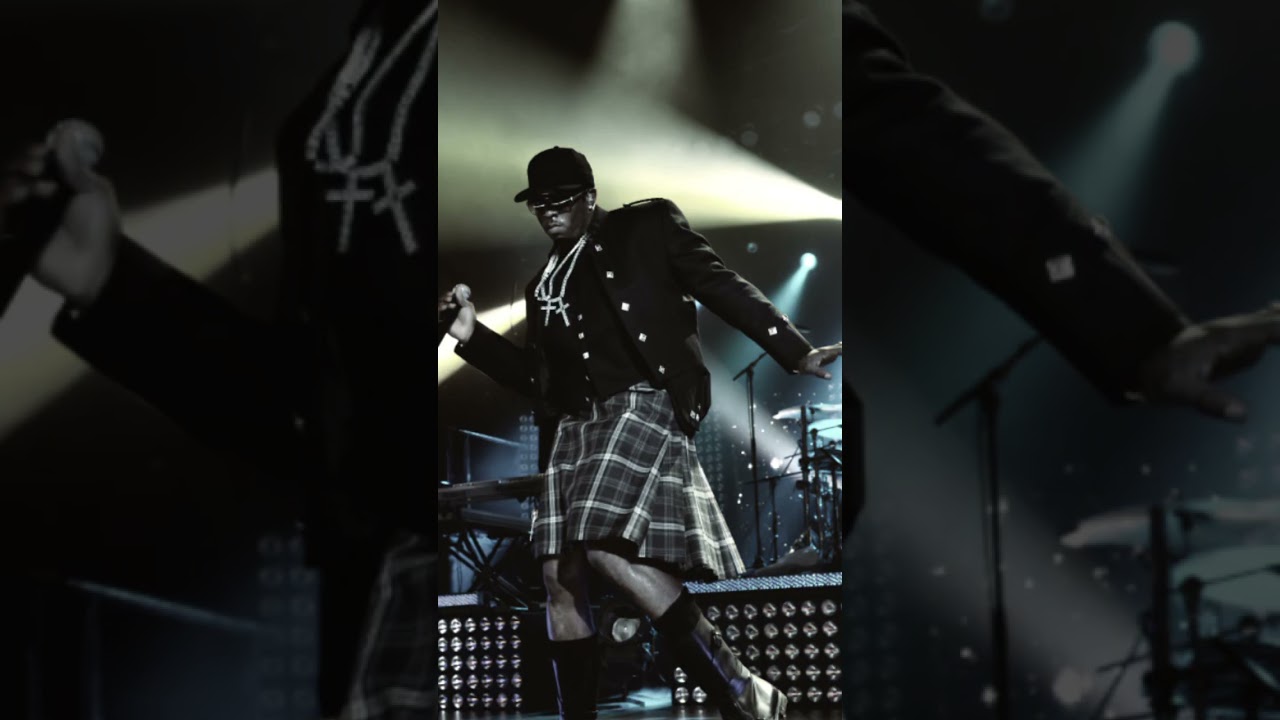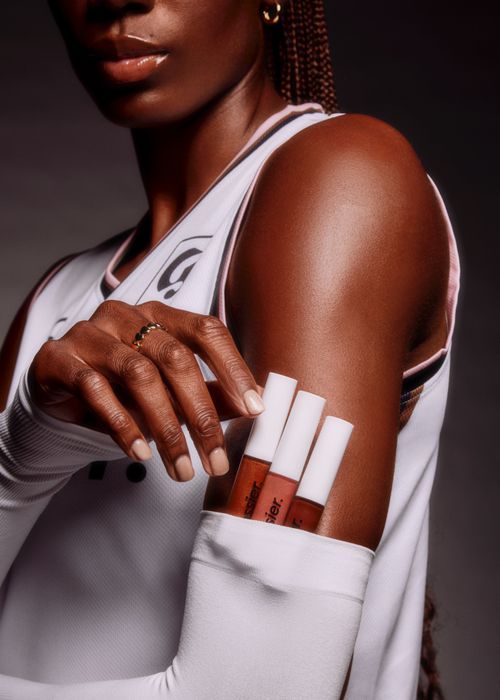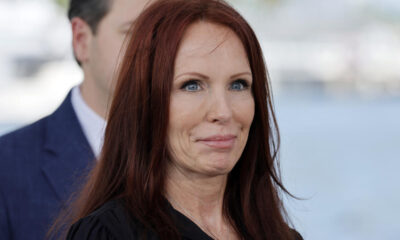Fashion
The future of fashion compliance in the US. Sustainability takes center stage

Within the past few decades, a new trend in fashion has emerged where sustainability meets the world of design. Fashion Sustainability has put a new emphasis on the use of natural and organic materials such as wool, linen, and cotton, grown and harvested without harmful pesticides or chemicals with an end goal to create biodegradable pieces to decrease the amount of waste in landfills and overall pollution.
Regions such as the EU especially, have implemented new laws and regulations promoting sustainable fashion, but the US, on the other hand, has taken few initiatives. Thus, the future of fashion sustainability in the United States still remains a question. Are they planning on following in the EU’s footsteps by implementing stricter regulations or are they simply not there yet? Let’s take a look at their actions so far.
Fashion brands doing business in the state must focus on sustainability, supply chain transparency and reducing their environmental impact
Pressing fashion giants with the New York Fashion Act
In 2022, the New York Fashion Act – Fashion Sustainability and Social Accountability Act proposed environmental and human rights due diligence for fashion sustainability firms in New York. Fashion brands doing business in the state must focus on sustainability, supply chain transparency and reducing their environmental impact; promoting the implementation of public global supply chain maps, the integration of science-based greenhouse gas emissions reduction targets and publishing details on the management of chemical usage. It sounds promising right? Well, there are a few implications:
- First of all, the act is not mandatory for all companies in New York. It only applies to apparel, footwear, and handbag brands with annual revenues of over $100 Million. This includes major companies such as Gap, Ralph Lauren, and Tapestry and international players like Shein, H&M, Prada and LVMH.
- In addition, it only requires brands to disclose information about their supply chain, which does not necessarily improve sustainability. If companies don’t comply with regulation, the government will take up to 2 percent of the companies annual revenue ($2 Million per year). It seems like a low amount, but this is a significant measure in an industry that operates on narrow margins.
- Fortunately, it’s currently in the process of being passed. As of May 7th, it remains in the hands of lawmakers, and continues to increase in popularity.
- Companies who support this movement and are pushing for its passing include: Elieen Fisher, Patagonia, GANNI, Uprose, Everlane, Reformation, Another Tomorrow, Mara Hoffman, and many others.
- Although the implementation forecast remains uncertain at this time, it does in fact represent a significant step towards more accountability and transparency in the fashion industry.
As further regulations pass and sustainability comes to the forefront, the extra costs at the beginning will balance out
Sustainability regulations reach the US West Coast
On the other coast of the United States, who is most well known for its push towards a greener planet, California, introduced in October 2023, Senate Bill 253 and Senate Bill 261. SB 253 Climate Corporate Data Accountability Act is the first of its kind in the United States, following the establishment of the European Union’s Corporate Sustainability Reporting Directive.
- This act will mandate disclosure of greenhouse gas emission data to US business entities whose total annual revenues exceed one billion dollars (about 5,300 companies) and do business in California regardless of where their headquarters is located.
- Businesses will have to report Scope 1 emissions (direct greenhouse emissions), Scope 2 emissions (indirect greenhouse emission) and Scope 3 emissions (indirect upstream and downstream greenhouse emissions) starting in 2026.
- This is one of the most significant new requirements as covered entities must track and report on their emissions worldwide.
In addition, SB 261 The Greenhouse Gases: Climate-related Financial Risk Act will require companies with more than $500 million in annual revenue (about 10,000 companies) to disclose their climate-related financial risks and measures they have adapted to reduce and adapt to those risks.
- Like SB 253, the act will apply to all public and private companies above the revenue threshold doing business in California.
- The law requires companies to prepare their reports following the Task Force on Climate-Related Financial Disclosures framework with the first disclosure due in 2026. This new mandate seems more promising then New York, but the concerns are just as prevalent.
Business groups have argued that the bills will lead to increased litigation, relegation and higher costs that companies will pass onto consumers. Yes, this could be concerning initially, but as further regulations pass and sustainability becomes on the forefront, the extra costs at the beginning will balance out to the previous cost normality of production.
With this in consideration, the future of sustainability within the United States is definitely a work in progress. The actions taken so far are stepping stones, slowly creating a long path of sustainable regulation in the foreseen future. Only two states so far have taken initiatives, but a hopeful spark of interest nationwide will occur and flourish into something great.
With the New York Fashion Act becoming close to passing, and SB 253 and 261 that just passed, companies should start and continue to prepare for one of the biggest changes in fashion history. BCome, a pioneer of intelligent methodologies for global sustainability management works with companies from start to finish. From traceability to consumer communication, BCome has got you covered in every sector of sustainability. Putting your company in the best position to meet every new mandate and flourish in this new era. Let’s discuss your needs!
Fashion Models
Diotima

Fashion
Rappers who Broke Genders Norms with Women‘s Clothing #diddy #youngthug #jadensmith #kidcudi #shorts

In recent years, several male rappers have embraced fashion styles that challenge traditional gender norms, incorporating elements typically associated with women’s fashion. This style is often characterized by fluidity, androgyny, and a bold rejection of conventional masculine stereotypes. Here’s a closer look:
1. **Androgynous Fashion**: Artists like Young Thug have been pioneers in breaking down gender barriers in rap fashion. He has famously worn dresses, skirts, and sheer fabrics in both his music videos and public appearances. This androgynous style reflects a growing acceptance of fluidity in both gender and fashion, allowing rappers to express themselves more freely without conforming to rigid masculine standards.
2. **High-Fashion Influence**: Some rappers, such as Lil Uzi Vert and Jaden Smith, mix high-fashion with feminine elements. They wear items like blouses, tight-fitting clothing, handbags, and even skirts, often drawing from high-end designers like Gucci, Louis Vuitton, and Rick Owens. Their style often combines traditionally feminine silhouettes with more neutral or streetwear-inspired pieces, creating a hybrid, avant-garde look.
3. **Makeup and Accessories**: Beyond clothing, some male rappers have embraced traditionally feminine accessories and makeup. Jewelry like pearl necklaces, earrings, nail polish, and eyeliner have become part of their everyday looks, further blurring the lines between masculine and feminine aesthetics. A$AP Rocky, for example, is known for wearing pearl necklaces and experimenting with bold fashion choices that push gender norms.
This trend reflects a larger cultural shift toward inclusivity and self-expression, showing that in rap, fashion can be a powerful tool for challenging stereotypes and expressing individuality.
source
Fashion Models
Video

Fashion Models
Top 10 Hottest Australian Female Models #australiahotmodels

In this video we will figure out the most hot and beautiful Australian hot models.
#australian #australiahotmodels #australiahotgirls
Top 10 Hottest Australian Female Models 2023 | Australian models
source
Fashion Models
Glossier

Fashion Models
Harper's Bazaar Mexico

-

 Sport7 hours ago
Sport7 hours agoJoshua vs Dubois: Chris Eubank Jr says ‘AJ’ could beat Tyson Fury and any other heavyweight in the world
-

 News1 day ago
News1 day agoYou’re a Hypocrite, And So Am I
-

 News8 hours ago
News8 hours agoIsrael strikes Lebanese targets as Hizbollah chief warns of ‘red lines’ crossed
-

 Technology6 hours ago
Technology6 hours agoiPhone 15 Pro Max Camera Review: Depth and Reach
-

 CryptoCurrency7 hours ago
CryptoCurrency7 hours agoAre there ‘too many’ blockchains for gaming? Sui’s randomness feature: Web3 Gamer
-

 CryptoCurrency7 hours ago
CryptoCurrency7 hours agoHelp! My parents are addicted to Pi Network crypto tapper
-

 CryptoCurrency7 hours ago
CryptoCurrency7 hours agoSEC sues ‘fake’ crypto exchanges in first action on pig butchering scams
-

 CryptoCurrency7 hours ago
CryptoCurrency7 hours agoDecentraland X account hacked, phishing scam targets MANA airdrop
-

 CryptoCurrency7 hours ago
CryptoCurrency7 hours agoBitcoin miners steamrolled after electricity thefts, exchange ‘closure’ scam: Asia Express
-

 CryptoCurrency7 hours ago
CryptoCurrency7 hours agoCertiK Ventures discloses $45M investment plan to boost Web3
-

 CryptoCurrency7 hours ago
CryptoCurrency7 hours agoDorsey’s ‘marketplace of algorithms’ could fix social media… so why hasn’t it?
-

 CryptoCurrency7 hours ago
CryptoCurrency7 hours agoSEC asks court for four months to produce documents for Coinbase
-

 Sport7 hours ago
Sport7 hours agoUFC Edmonton fight card revealed, including Brandon Moreno vs. Amir Albazi headliner
-

 CryptoCurrency6 hours ago
CryptoCurrency6 hours agoEthereum is a 'contrarian bet' into 2025, says Bitwise exec
-

 Science & Environment10 hours ago
Science & Environment10 hours agoHow one theory ties together everything we know about the universe
-

 CryptoCurrency7 hours ago
CryptoCurrency7 hours agoSEC settles with Rari Capital over DeFi pools, unregistered broker activity
-

 News5 hours ago
News5 hours agoBrian Tyree Henry on voicing young Megatron, his love for villain roles
-

 Science & Environment21 hours ago
Science & Environment21 hours agoQuantum time travel: The experiment to ‘send a particle into the past’
-

 Science & Environment7 hours ago
Science & Environment7 hours agoWe may have spotted a parallel universe going backwards in time
-

 CryptoCurrency7 hours ago
CryptoCurrency7 hours ago2 auditors miss $27M Penpie flaw, Pythia’s ‘claim rewards’ bug: Crypto-Sec
-

 CryptoCurrency7 hours ago
CryptoCurrency7 hours agoArthur Hayes’ ‘sub $50K’ Bitcoin call, Mt. Gox CEO’s new exchange, and more: Hodler’s Digest, Sept. 1 – 7
-

 CryptoCurrency7 hours ago
CryptoCurrency7 hours agoTreason in Taiwan paid in Tether, East’s crypto exchange resurgence: Asia Express
-

 CryptoCurrency7 hours ago
CryptoCurrency7 hours agoLeaked Chainalysis video suggests Monero transactions may be traceable
-

 CryptoCurrency7 hours ago
CryptoCurrency7 hours agoJourneys: Robby Yung on Animoca’s Web3 investments, TON and the Mocaverse
-

 CryptoCurrency7 hours ago
CryptoCurrency7 hours agoLouisiana takes first crypto payment over Bitcoin Lightning
-

 CryptoCurrency7 hours ago
CryptoCurrency7 hours agoCrypto whales like Humpy are gaming DAO votes — but there are solutions
-

 CryptoCurrency7 hours ago
CryptoCurrency7 hours agoFive crypto market predictions that haven’t come true — yet
-

 CryptoCurrency7 hours ago
CryptoCurrency7 hours ago$12.1M fraud suspect with ‘new face’ arrested, crypto scam boiler rooms busted: Asia Express
-

 CryptoCurrency7 hours ago
CryptoCurrency7 hours ago‘Everything feels like it’s going to shit’: Peter McCormack reveals new podcast
-

 Science & Environment10 hours ago
Science & Environment10 hours agoFuture of fusion: How the UK’s JET reactor paved the way for ITER
-

 CryptoCurrency7 hours ago
CryptoCurrency7 hours agoFed rate cut may be politically motivated, will increase inflation: Arthur Hayes
-

 CryptoCurrency7 hours ago
CryptoCurrency7 hours agoBinance CEO says task force is working ‘across the clock’ to free exec in Nigeria
-

 CryptoCurrency7 hours ago
CryptoCurrency7 hours agoBitcoin price hits $62.6K as Fed 'crisis' move sparks US stocks warning
-

 CryptoCurrency7 hours ago
CryptoCurrency7 hours agoCZ and Binance face new lawsuit, RFK Jr suspends campaign, and more: Hodler’s Digest Aug. 18 – 24
-

 CryptoCurrency7 hours ago
CryptoCurrency7 hours agoCardano founder to meet Argentina president Javier Milei
-

 CryptoCurrency7 hours ago
CryptoCurrency7 hours agoMemecoins not the ‘right move’ for celebs, but DApps might be — Skale Labs CMO
-

 CryptoCurrency7 hours ago
CryptoCurrency7 hours agoBitcoin bull rally far from over, MetaMask partners with Mastercard, and more: Hodler’s Digest Aug 11 – 17
-

 CryptoCurrency7 hours ago
CryptoCurrency7 hours agoTelegram bot Banana Gun’s users drained of over $1.9M
-

 CryptoCurrency7 hours ago
CryptoCurrency7 hours agoLow users, sex predators kill Korean metaverses, 3AC sues Terra: Asia Express
-

 CryptoCurrency7 hours ago
CryptoCurrency7 hours agoBlockdaemon mulls 2026 IPO: Report
-
Business6 hours ago
UK hospitals with potentially dangerous concrete to be redeveloped
-

 News5 hours ago
News5 hours ago“Beast Games” contestants sue MrBeast’s production company over “chronic mistreatment”
-

 News5 hours ago
News5 hours agoSean “Diddy” Combs denied bail again in federal sex trafficking case in New York
-

 News5 hours ago
News5 hours agoBrian Tyree Henry on his love for playing villains ahead of “Transformers One” release
-

 Technology3 days ago
Technology3 days agoYouTube restricts teenager access to fitness videos
-

 News9 hours ago
News9 hours agoChurch same-sex split affecting bishop appointments
-

 Politics2 days ago
Politics2 days agoTrump says he will meet with Indian Prime Minister Narendra Modi next week
-

 Science & Environment10 hours ago
Science & Environment10 hours ago‘Running of the bulls’ festival crowds move like charged particles
-

 Politics21 hours ago
Politics21 hours agoWhat is the House of Lords, how does it work and how is it changing?
-

 MMA7 hours ago
MMA7 hours agoUFC’s Cory Sandhagen says Deiveson Figueiredo turned down fight offer
-

 MMA7 hours ago
MMA7 hours agoDiego Lopes declines Movsar Evloev’s request to step in at UFC 307
-

 Football7 hours ago
Football7 hours agoNiamh Charles: Chelsea defender has successful shoulder surgery
-

 Football7 hours ago
Football7 hours agoSlot's midfield tweak key to Liverpool victory in Milan
-

 Science & Environment10 hours ago
Science & Environment10 hours agoHow to wrap your head around the most mind-bending theories of reality
-

 Fashion Models6 hours ago
Fashion Models6 hours agoMiranda Kerr nude
-

 Politics6 hours ago
Politics6 hours agoLabour MP urges UK government to nationalise Grangemouth refinery
-

 News4 days ago
News4 days agoIndia Now Moves from Deliberations to Deliverables on Crimes Against Women
-

 Science & Environment16 hours ago
Science & Environment16 hours agoQuantum forces used to automatically assemble tiny device
-

 Science & Environment10 hours ago
Science & Environment10 hours agoRethinking space and time could let us do away with dark matter
-

 Entertainment5 hours ago
Entertainment5 hours ago“Jimmy Carter 100” concert celebrates former president’s 100th birthday
-

 Science & Environment18 hours ago
Science & Environment18 hours agoSunlight-trapping device can generate temperatures over 1000°C
-

 News5 hours ago
News5 hours agoJoe Posnanski revisits iconic football moments in new book, “Why We Love Football”
-

 Health & fitness2 days ago
Health & fitness2 days agoWhat 10 days of a clean eating plan actually does to your body and why to adopt this diet in 2022
-

 Health & fitness2 days ago
Health & fitness2 days agoWhen Britons need GoFundMe to pay for surgery, it’s clear the NHS backlog is a political time bomb
-

 Science & Environment20 hours ago
Science & Environment20 hours agoQuantum to cosmos: Why scale is vital to our understanding of reality
-

 Technology3 days ago
Technology3 days agoTrump says Musk could head ‘government efficiency’ force
-

 Science & Environment20 hours ago
Science & Environment20 hours agoX-ray laser fires most powerful pulse ever recorded
-

 Science & Environment19 hours ago
Science & Environment19 hours agoHow indefinite causality could lead us to a theory of quantum gravity
-

 Science & Environment18 hours ago
Science & Environment18 hours agoDoughnut-shaped swirls of laser light can be used to transmit images
-

 Science & Environment17 hours ago
Science & Environment17 hours agoWhy we are finally within reach of a room-temperature superconductor
-

 Science & Environment16 hours ago
Science & Environment16 hours agoBlack holes scramble information – but may not be the best at it
-

 Science & Environment16 hours ago
Science & Environment16 hours agoThe galactic anomalies hinting dark matter is weirder than we thought
-

 CryptoCurrency7 hours ago
CryptoCurrency7 hours agoTelegram CEO cannot leave France, OpenSea receives Wells notice, and more: Hodler’s Digest, Aug. 25 – 31
-

 CryptoCurrency7 hours ago
CryptoCurrency7 hours agoSolana unveils new Seeker device, says it’s not just a ‘memecoin phone’
-

 CryptoCurrency7 hours ago
CryptoCurrency7 hours agoCrypto scammers orchestrate massive hack on X but barely made $8K
-

 CryptoCurrency7 hours ago
CryptoCurrency7 hours agoBitcoiners are ‘all in’ on Trump since Bitcoin ’24, but it’s getting risky
-

 CryptoCurrency7 hours ago
CryptoCurrency7 hours agoReal-world asset tokenization is the crypto killer app — Polygon exec
-

 Science & Environment10 hours ago
Science & Environment10 hours ago‘Sound laser’ is the most powerful ever made
-

 Science & Environment10 hours ago
Science & Environment10 hours agoJupiter’s stormy surface replicated in lab
-
Politics10 hours ago
Owen Paterson loses ECHR appeal against report that preceded downfall | Owen Paterson
-

 CryptoCurrency7 hours ago
CryptoCurrency7 hours agoDuckDuckGo ranks Etherscan phishing websites in top results
-

 CryptoCurrency7 hours ago
CryptoCurrency7 hours agoElon Musk is worth 100K followers: Yat Siu, X Hall of Flame
-

 CryptoCurrency7 hours ago
CryptoCurrency7 hours agoVonMises bought 60 CryptoPunks in a month before the price spiked: NFT Collector
-

 CryptoCurrency7 hours ago
CryptoCurrency7 hours agoVitalik tells Ethereum L2s ‘Stage 1 or GTFO’ — Who makes the cut?
-

 CryptoCurrency7 hours ago
CryptoCurrency7 hours agoEthereum falls to new 42-month low vs. Bitcoin — Bottom or more pain ahead?
-

 CryptoCurrency7 hours ago
CryptoCurrency7 hours agoETH falls 6% amid Trump assassination attempt, looming rate cuts, ‘FUD’ wave
-
Business7 hours ago
Thames Water seeks extension on debt terms to avoid renationalisation
-
Business6 hours ago
How Labour donor’s largesse tarnished government’s squeaky clean image
-
Business5 hours ago
Axel Springer top team close to making eight times their money in KKR deal
-

 News5 hours ago
News5 hours agoSean “Diddy” Combs denied bail again in federal sex trafficking case
-

 News5 hours ago
News5 hours agoBrian Tyree Henry on voicing young Megatron, his love for villain roles
-
Business5 hours ago
John Paulson brushes aside Wall Street worries about Donald Trump’s tariff plan
-
Politics5 hours ago
Why is Sue Gray at the centre of a new political storm? | Sue Gray
-

 News3 hours ago
News3 hours agoWoman sues Florida sheriff after mistaken arrest lands her in jail on Christmas
-

 News4 hours ago
News4 hours agoGlobal Tensions and Press Freedom
-

 News9 hours ago
News9 hours agoPolice chief says Daniel Greenwood 'used rank to pursue junior officer'
-

 Technology2 days ago
Technology2 days agoIs carbon capture an efficient way to tackle CO2?
-

 Science & Environment10 hours ago
Science & Environment10 hours agoPhysicists have worked out how to melt any material
-

 Politics22 hours ago
Politics22 hours agoKeir Starmer facing flashpoints with the trade unions
-

 Science & Environment1 day ago
Science & Environment1 day agoWhy this is a golden age for life to thrive across the universe





You must be logged in to post a comment Login